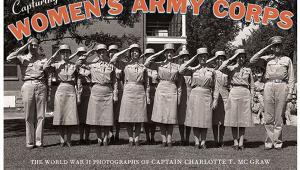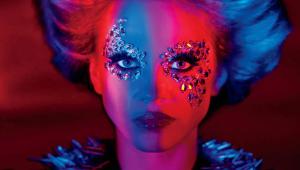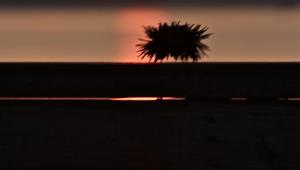Digital Imaging Books: 2009; New Books That Belong On Your Bookshelf
“When I discovered libraries, it was like having Christmas every day.”—Jean Fritz
The above quote sums up what happened when my second grade class at St. Katharine’s School made a field trip to the Clifton Branch of Baltimore’s Enoch Pratt Free Library (www.prattlibrary.org). Growing up there were few books in my house—I learned to read from newspapers—and the only one I remember seeing was my Dad’s copy of Richard Henry Dana, Jr.’s Two Years Before the Mast. Instead, here was a giant room filled with books that you could borrow and read as long as you brought them back! Thus began a lifelong passion for books and reading and I hope that you can make the time to take your kids or grandkids to a library to open up that same world for them. While my initial infatuation with books centered around Jean de Brunhoff’s Babar series, here is a selection of books that may or may not have elephants in them but will help with your photographic efforts and may inspire you just as much as Babar and his family did me.
The Best Of The Best
The Hot Shoe Diaries; by Joe McNally; New Riders; 303 pages; $39.99; (ISBN: 0-321-58014-1)
Most books featured here are either sent to the Shutterbug office, directly to me, or requested as a result of press releases. The Hot Shoe Diaries is different because I found it at my local library. In it, Joe McNally has written the de facto standard volume on using shoe-mount flashes to produce arresting images that literally leap from each well-printed page. Part One kicks off with a quote from Back to the Future’s Doc Brown and sets the mood for what is a real-world look at making photographs that tell a story with a distinctive point of view. The balance of the book uses a case study approach that’s nothing like what that sounds and instead you’re inside McNally’s head as he jumps on fire trucks, rides a catamaran, hangs out in an OR, and visits a beauty parlor, showing while telling how to use the humble shoe-mount flash to produce expressive and innovative lighting effects.
 |
Travel Photography; by Bob Krist; Lark Books; 192 pages; $24.95; (ISBN: 978-1-60059-110-5)
This large format book is part of Lark Books’ “Digital Masters” series and nobody would argue with the fact that the legendary Bob Krist is indeed a master, although his name gets lost on the cover design. This lushly illustrated and produced book is full of Krist’s incredible photography, but more importantly, his text illuminates the life of a travel photographer, providing insights into how these images were made. My favorite parts of the book are the “On the Road” sidebars that include tips such as how and when you use rear curtain sync and don’t miss his sidebar on “Photography and the Law.” This superb book is filled with tips on gear, working under difficult lighting conditions, and the reality of today’s travel photography world. The afterward, “Don’t Sweat the Megapixels,” clearly puts the role of technology into perspective.
 |
The Hasselblad Manual; by Ernst Wildi; Focal Press; 416 pages; hardbound; $59.95; (ISBN: 978-0-240-81026-3)
Few books are an instant classic but this one is and nobody is more qualified to write it than Ernst Wildi, who has been a worldwide ambassador for all things Hasselblad for as long as I can remember. The book covers not just how to use Hasselblad cameras but how to use them creatively, including exotics such as the Flexbody to classics and even the latest digital-only models. While my beloved Xpan is given little space, this 35mm camera is not automatically top of mind when you think “Hasselblad.” The book is beautifully illustrated with superbly reproduced photos and drawings that show how all the bits and pieces of the Hasselblad system work together. Wildi’s text is like the camera itself, there’s no wasted motion with just the details explained in clear and precise prose. A must-have book if you own or just dream about owning a Hasselblad.
 |
Getting Started
Nature Photography; by Chris Weston; Focal Press; 288 pages; $29.95; (ISBN: 978-0-240-81016-4)
This landscape format book is ideal for beginners because, rather than providing one point of view, Chris Weston has included nature tips, tools, and techniques from some of the best nature photographers in the world, including Heather Angel, Jim Brandenburg, the redoubtable Freeman Patterson, and the simply amazing Art Wolfe. All of these masters share some of their tips (it is a small book), making it the perfect gift for the photographer who wants to dip their lens into the nature photography world and capture wildlife and landscape images.
 |
The Digital Photographer’s Software Guide; by John Lewell; Course Technology PTR; 474 pages; $29.99; (ISBN: 1-59863-543-3)
This is as comprehensive as any guide to photo software and Photoshop-compatible plug-ins for image editing and output can be in this online age. I keep it on my shelf as a reference for those times when Google isn’t as perfect as Larry Page and Sergey Brin would like you to believe. For instance, I would have never found a “droplet” like Lobster without this book. Lobster lets you make changes to a luminosity layer in Photoshop without affecting either hue or saturation. It’s a niche tool to be sure but when you need it, you need it.
 |
Bryan Peterson’s Understanding Photography Field Guide; by Bryan Peterson; Amphoto Books; 400 pages; $24.99; (ISBN: 978-0-8174-3225-6)
A search on Amazon.com made using the author’s name produced “29,264 results,” so he is truly the Stephen King of the photo world, although his books are a lot less scary. This one is digest sized and designed to slip into a camera bag for reading during downtime on photo trips and features great-looking photos and tips that will delight the newbie discovering the wide world of SLR photography. He touches on exposure, dances around white balance, and plunges deeply into how different kinds of lenses produce different kinds of images. The chapter on “Designing a Striking Image” will be useful for intermediate photographers and more advanced shooters in the doldrums and in need of a creativity tune-up.
 |
Selling Your Photography; by Richard Weisgrau; Allworth Press; 224 pages; $24.95; (ISBN: 978-1-58115-660-7)
As soon as a photographer reaches a certain level of competence, they want to know how they can make money taking photos. They’ll find that answer here. The goal of many photographers is to see their images in print and get paid for it and Richard Weisgrau shows the way with information on finding clients and market segments but wisely begins with a section on self-evaluation. Similarly, his section on “Developing Good Business Habits” shows how it’s just as important as developing and exercising your technical and aesthetic skills. There are just a few photographs in the book but that’s not its point. This book along with Rohn Engh’s Sell & Re-Sell Your Photos are must-reads for the photographer serious about selling images.
 |
Mastering Your Digital SLR; by Chris Weston; Voyageur Press; 192 pages; $24.99; (ISBN: 978-0-7603-3768-4)
Most books of this type make the mistake of being so big and heavy that the person who should read it—the newbie—won’t because they’re intimated by the book’s mere size. Chris Weston and Voyageur Press don’t make that mistake, producing a good-looking volume that’s an easy and fun read and will have the new SLR owner up to speed in no time at all. After a detailed introduction to all the features that new users won’t find on their point-and-shoot cameras, Weston moves to advanced shooting techniques, complete with lots of illustrations on the right ways to make these kinds of photographs look as good as the budding user’s aesthetic skills permit.
 |
Capturing The Image
Macro Photography for Gardeners and Nature Lovers; by Alan L. Detrick; Timber Press; 176 pages; $24.95; (ISBN: 978-0-88192-890-7)
This is a book that could easily fit into the “Getting Started” section because it’s aimed at newbies but also serves as a wonderful introduction to the world of flower photography. There are some veggies here, too, and all of the beautifully reproduced photographs are accompanied by text that helps and never talks down to the reader. The author’s ability to explain techy details such as depth of field to the neophyte makes it an easy read and even that old saw “composition” is handled in Alan Detrick’s warm and friendly manner along with photographs that clearly show the point he’s making.
 |
Butterfly Photographer’s Handbook; by William B. Folsom; Amherst Media; 128 pages; $34.95; (ISBN: 978-1-58428-247-1)
Beautifully executed and featuring the best design I’ve seen yet from Amherst, this handbook is all its name implies and more. Butterflies are beautiful to look at though difficult to photograph, but William Folsom takes you by the hand and not only tells how to make close-up images but includes information on butterfly behavior that will help in the process. You’ll find a list of flowers that attract butterflies and he provides lots of tips on the kinds of things butterflies like to snack on so you can provide them with a Lepidoptera version of the backyard feeder that bird photographers use. This is a great read and belongs in your collection along with Rick Sammon’s exquisite book Flying Flowers.
 |
Digital Infrared Photography: Photo Workshop; by Deborah Sandidge; Wiley; 256 pages; $39.99; (ISBN: 978-0-470-40521-5)
I think that Deborah Sandidge is the most creative photographer working in the digital IR genre and instead of keeping her secrets to herself, she generously shares them with readers. In the interest of full disclosure, I was technical editor on this book and have three photos inside but Sandidge is the star and it’s her outstanding photography that will keep you turning the pages. Digital IR capture is by nature interpretive but Sandidge does much more than that as she shows some of the digital darkroom techniques that place her IR work in a class by itself. She sees IR photography as another tool for the creative photographer and not limited to a single genre, such as landscapes. As charming as her sense of place may be, it’s matched by an enthusiasm that makes her book a joy to read. It belongs on the bookshelf of any photographer who’s ever wondered what digital IR photography has to offer.
 |
How to Digitally Photograph Cars; by Jason Siu and Josh Mackey; CarTech; 128 pages; $24.95; (ISBN: 978-1-932-49499-0)
Unlike previous UK-only offerings, this book focuses specifically on the sport compact cars that Jason Siu photographs for our sister publication Modified. Similarly, Josh Mackey shoots cars in action and both photographers take us for a ride in a book that’s sprinkled throughout with shooting tips and captions that include all of the EXIF data for each shot! One of the most difficult aspects of car photography is interiors and the book shows how in clear prose and carefully executed examples. The authors also take you into the digital darkroom, showing some of their favorite techniques for creating images that drive off the page. Tip: Amazon UK (www.amazon.co.uk) is a great source of UK-only offerings such as each of Tony Baker and James Mann’s How to Photographs Cars.
 |
- Log in or register to post comments

















































